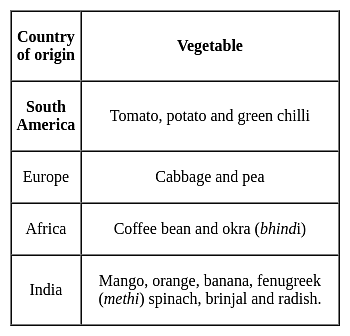EVS Content (Plant Kingdom) - CTET & State TET MCQ
10 Questions MCQ Test - EVS Content (Plant Kingdom)
The village got its name from the many khejri trees growing there. The people of this village take great care of the plants, trees, and animals. In India this village is
Consider the following main functions of plants root:
A. To produce and store food
B. To give strength and support to the plant
C. To transport water and minerals from roots to other parts of plant
The main function(s) of the stem is/are:
| 1 Crore+ students have signed up on EduRev. Have you? Download the App |
Choose the correct option from the given features of desert plants.
(A) Leaves of some plants take the shape of spines.
(B) Photosynthesis in cactus plant is usually carried out by leaves.
(C) Roots of most desert plants go very deep into the soil for absorbing water.
The name of the scientist who did experiments with the pea plant and on the basis of observation concluded that the pea plants have some traits which come in pairs; such as tall or short, yellow or green, rough or smooth, etc. is:
There are some plants which hunt/trap mices, frogs, insects and small animals. Nepenthese is most famous amongst them. This plant is found mainly in which part of the country?
Which of the following was brought to our country by the traders coming from South America?
Choose the correct statement about weeds.
(A) Weeds grow in the fields without being planted.
(B) It is important to remove weeds from the field.
(C) Weeds reduce the production of field by using the water and fertilizers given to the crops.
(D) Weeds do not affect the production of crops.



















